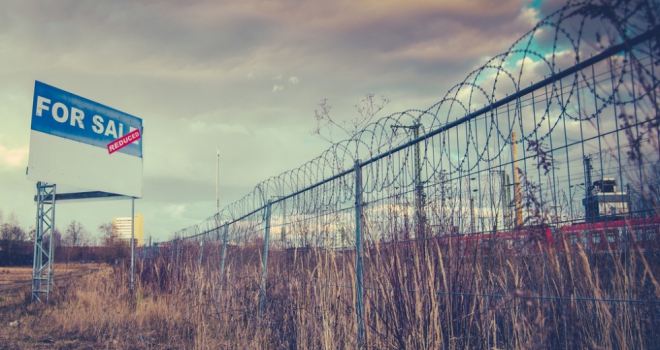
"The renewable energy space is evolving at great speed and it has become one of the driving forces where land sourcing is concerned"
- Mitchell Fasanya - Searchland
From solar to wind farms and everything in between, renewable energy is changing the global energy landscape as sustainable power solutions become the increasingly preferred option to not only power the UK but also to help the right against greenhouse gas emissions and climate change.
However, like many areas of land development, it’s not without its challenges. Renewable energy sites require a substantial amount of flat, open land, access routes and space for batteries and inverters. In fact, the average 1MW solar farm needs around six acres for a site to be a viable option.
Land such as brownfield or industrial land that is often shunned by residential property developers is ideal for renewable conversion and the good news is that Searchland’s data shows there are plenty of opportunities in the current market.
385,000 renewable site opportunities across the UK
As it stands, there are some 384,763 sites available across the UK with an average plot size of 89.8 acres. General industrial sites are the most abundant option with 319,130 current plots, albeit they average the smallest plot size at 12 acres.
There are 33,066 farm plots currently available with an average plot size of 125.4 acres, with a further 4,181 agricultural site opportunities. While they account for the lowest volume, these agricultural sites boast the largest average plot size at 132 acres.
However, the transition to a renewable site isn’t always seamless and requires ongoing maintenance of the land, consideration of the variability of natural energy generation and the management of differing expectations between renewable companies and land owners.
Eight considerations when sourcing renewable sites
Searchland has compiled eight top considerations for renewable companies to consider when sourcing land successfully.
Gain access to comprehensive DNO data - Starting with an all-encompassing view is essential and you need to access all 14 DNO map areas across England, Wales and Scotland to ensure you get a full view of just what is available.
This includes supplier information, operators, substations, power lines, line voltages, towers, and tower voltages, allowing an informed decision on site selection, infrastructure planning, integration, optimisation and efficiency and more.
Filtering by proximity to substations and lines - There are almost 175,000 DNO substations across England alone, with over 3 million towers. A site within close proximity to a substation helps to reduce energy loss during transmission and improve efficiency
Access to headroom rating and voltage group data - While the close proximity of a substation is important, you also need to know they have the room to accommodate an additional energy supply, allowing you to integrate seamlessly with the power grid.
Selecting the right terrain and panel-facing direction - Where solar farms are concerned, the ideal plot is south-facing, flat or sloped land to help maximise exposure to the sun. Being able to identify such plots from the get-go dramatically improves search efficiency, not to mention whether or not the plot is suitable in terms of overall size.
Navigating local policy - Local policy can bring about a minefield of complications and so getting an immediate view of local planning regulations can prevent any unforeseen problems. Searchland’s AI tool provides instant information from local council plan documents and their approach to renewable energy, saving you hours of scrolling.
Evaluating and filtering planning constraints - Renewable development requires careful consideration of planning constraints, with factors such as flood zones or heritage sites preventing the process from moving forward.
Finding sites to power commercial areas directly - Commercial zones provide a great opportunity to help suppliers bypass their competitors to supply power to commercial consumers directly. In doing so, they increase optimisation as well as profit margins.
Planning application insights - By reviewing existing planning applications, as well as other already operational renewable sites, you can gain vital insight into the competitive landscape to help inform your strategic planning.
Co-founder and CEO of Searchland, Mitchell Fasanya, commented: “The renewable energy space is evolving at great speed and it has become one of the driving forces where land sourcing is concerned. Like all areas of land development, it’s not without its own individual requirements and restrictions which need to be carefully considered during the sourcing process.
"The success of this process relies on the abundance of information and the speed and efficiency at which it can be processed. Having a comprehensive view of potential sites is a great place to start, but the real value lies in being able to quickly identify the additional factors required such as plot size, the lie of the land, proximity of substations and so on.
"The ability to do so will enable renewable companies to stay a step ahead in what is already a very competitive and fast-moving market.”





